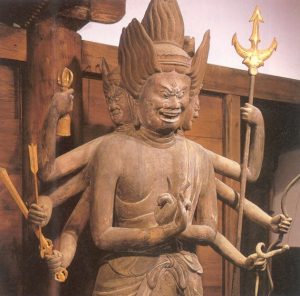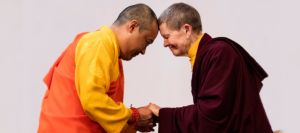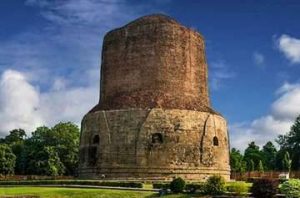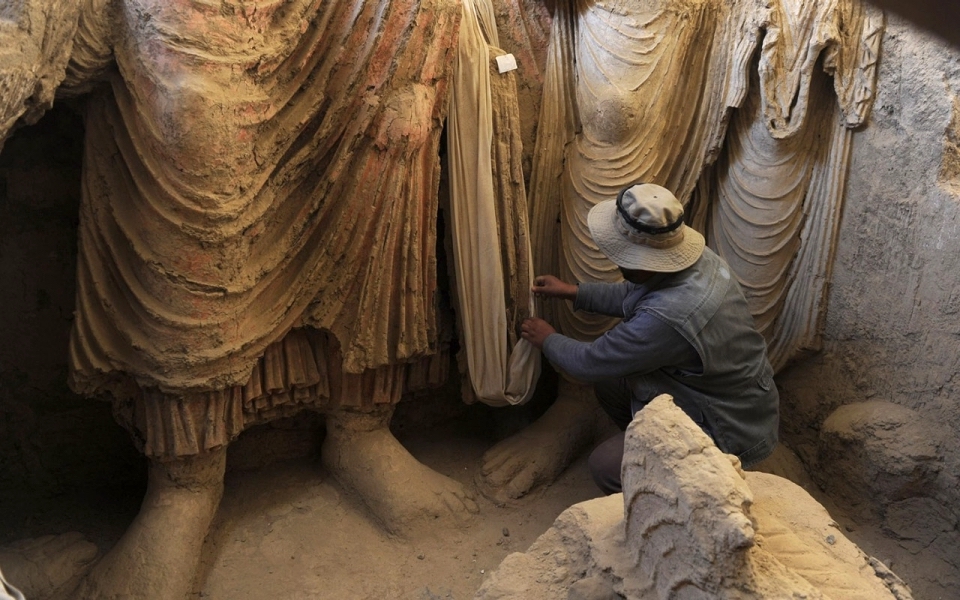
Negotiations between Afghanistan’s new Taliban government and China’s state-owned China Metallurgical Group Corp. (MCC) and its publicly listed subsidiary Metallurgical Corp. of China are underway over the resumption of mining activity at the Mes Aynak Logar copper project, media sources report. A Chinese delegation is scheduled to travel to Kabul later this month, at the Taliban’s invitation, to discuss the mining project, which is based on a deal signed with Afghanistan’s previous Western-backed government in 2007.
“They will be physically in Kabul in March and will discuss the issue with the Ministry of Mines and Petroleum,” said Ministry of Mines and Petroleum spokesperson Esmatullah Borhan. (Tolo News)
The copper project is located in a barren region of Afghanistan’s Logar Province, some 40 kilometers from Kabul. According to Afghanistan’s Ministry of Mines and Petroleum, the site is home to the world’s second-largest copper deposit, reportedly representing estimated reserves of 5.5 million tonnes of high-grade copper ore (Mes Aynak means “little source of copper” in Pashto).
However, the mining site is also home to one of the world’s most significant archeological excavations: the ancient settlement of Mes Aynak, once a city on the fabled Silk Road network of trade routes that facilitated the exchange of commodities, cultures, and spiritual traditions across the ancient world. This remarkable historical treasure trove, which French archaeologist Philippe Marquis described as “probably one of the most important points along the Silk Road,” (The Sydney Morning Herald) includes more than 400 Buddhist statues, stupas, and a 40-hectare monastery complex, along with forts and a citadel spread over 19 separate archaeological sites.

In 2007, the administration of then-president Hamid Karzai granted a 30-year mining lease to MCC for US$3 billion, the largest foreign investment and private business venture in Afghanistan by any country. MCC had planned to extract more than US$100 billion worth of copper that lies directly beneath the ancient city, however various factors at the time—among them a decline in the market price for copper and a deteriorating security situation—led to repeated delays in the extraction (originally scheduled for January 2013), which would mean the complete destruction of the archaeological site.
Following the ignominious retreat of American and allied military forces from Afghanistan last year, the survival of Afghanistan’s ancient and irreplaceable cultural heritage once again hangs in the balance. Meanwhile, Dozens of Chinese mining companies have reportedly expressed interest in inking deals for a host of resource extraction opportunities across Afghanistan.
The Taliban’s eagerness to establish economic ties with China’s industrial giants and its history of intolerance and cultural destruction have done little to instill confidence. From 1996–2001, Taliban forces attacked and looted museums and libraries, while banning almost all forms of artistic and cultural expression. In 2001, the Taliban famously destroyed two sixth-century Buddha statues at Bamiyan, and numerous statues and artifacts at the National Museum in Kabul. Over the course of the last 20 years of war and turmoil, countless cultural properties have been destroyed or removed from the country, and many cultural leaders fear that more irreplaceable monuments to the region’s distant past could be lost.
Meanwhile, provincial officials in Logar say that preparations have already been made for the reopening of the Mes Aynak Logar copper project.
“China MCC is in contact with the officials of the Ministry of Mines and Petroleum and they have shown readiness,” said Rafiullah Samim, director of information and culture in Logar. “There are some issues that are being discussed and these issues will be resolved.” (Tolo News)
The tragedy of this clash of civilizations has been highlighted in heart-wrenching detail in the 2014 documentary Saving Mes Aynak by Brent Huffman, an associate professor at the Medill School of Journalism at Northwestern University. Saving Mes Aynak centers on the remarkable race against time by Afghan archaeologist Qadir Temori to save the 5,000-year-old site near the border with Pakistan, which has so far been only partially excavated. Some experts believe that future discoveries at the site could have the potential to redefine the history of Afghanistan and even the history of Buddhism itself.
Aside from the remarkable and extensive remains of an ancient Buddhist settlement that dates to the Kushan Gandhara period (roughly contemporary with the Roman Empire and China’s Western Han dynasty), further archaeological evidence points to civilizations in the area flourishing as early as the third century BCE. Discoveries at the site include clues pointing to an ancient monastic cult that revered Siddhartha Gautama before he was enlightened, as well as manuscripts mentioning the presence of troops led by Alexander the Great.
Mes Aynak would qualify as a World Heritage site if the government of Afghanistan were to apply for that status, said archaeologist and UNESCO advisor Tim Williams in 2017. “This is an outstanding and complex archaeological landscape, with astounding quality of preservation.” (CNBC)
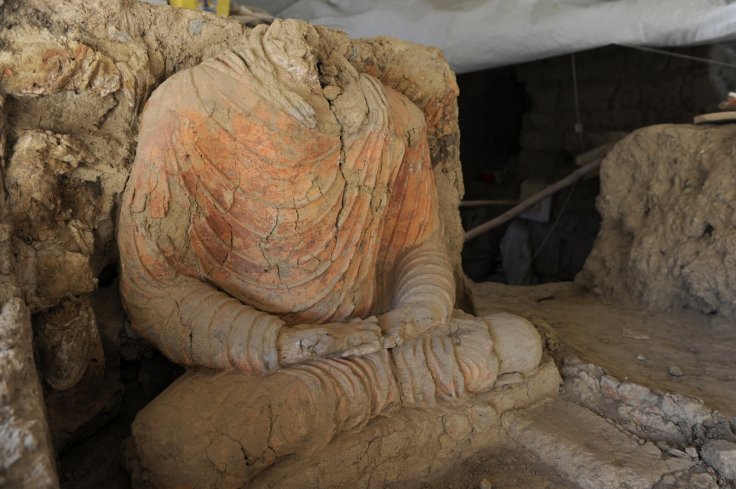
From ibtimes.co.uk
Buddhism has played a significant role in shaping the history and culture of what is now Afghanistan, flourishing in the kingdoms that lay on the Silk Road trade routes with Central Asia. The conquests of the Mauryan emperor Ashoka (r. c. 268–c. 232 BCE) and the subsequent Greco-Buddhist culture that blossomed under the Greco-Bactrian Kingdom (256 BCE–100 BCE) and the later Indo-Greek Kingdom (c. 180 BCE–c. 10 CE) saw Buddhism establish deep roots that lasted for more than 12 centuries until the religion began to dissipate following Muslim conquests in the seventh century, and disappearing during the Persianate Ghaznavid dynasty (977–1186).
A wealth of ancient Buddhist stupas, monasteries, caves, images of the Buddha, and other artifacts attest to this ancient and deeply rooted heritage. Ashoka’s territorial expansions, coupled with Greek influences in the mid-to-late fourth century BCE led to a unique cultural melting pot that saw the first known Buddhist statuary emerge in Gandhara—considered by many to represent the pinnacle of Buddhist art.
See more
China Pursues Afghanistan’s Mineral Wealth After U.S. Exit (The Wall Street Journal)
Taliban resume talks with the Chinese for copper mining in Mes Aynak (PIME AsiaNews)
Officials: Talks with Chinese Company on Mes Aynak Mine Continue (Tolo News)
China plans to destroy an ancient Buddhist city to get the copper buried there (CNBC)
Ancient treasures on shaky ground as Chinese miners woo Kabul (The Sydney Morning Herald)
Saving Mes Aynak
Related news reports from BDG
Future of Ancient Buddhist City of Mes Aynak, Afghanistan in Doubt Again after Taliban Takeover
Afghan Museums Fear for Ancient Buddhist Artifacts amid Taliban Takeover
From Bamiyan Buddhas to Museums, Taliban Seeks Legitimacy of Stewardship over Afghanistan’s Buddhist Heritage
British Museum to Return “Stunning” Gandharan Buddhist Artifacts to Afghanistan
Ancient Buddhist Artefacts from Afghanistan Restored in Japan
At UN Assembly, Sri Lanka Urges Environmental Efforts and Protection of Afghan Buddhist Heritage
Archaeologist Killed Near Buddhist Archaeological Site of Mes Aynak in Afghanistan
Is Time Running Out for the 5,000-year-old Mes Aynak Archaeological Site in Afghanistan?
Related features from BDG
Buddhistdoor View: Afghanistan – Mourning a Global Failure
Buddhist Traces in Afghanistan: Reminiscences of Peace and War
The Nostalgia of 2,500 Years: Celebrating South Asia’s Buddhist Heritage
Buddhistdoor View: Heritage Conservation





